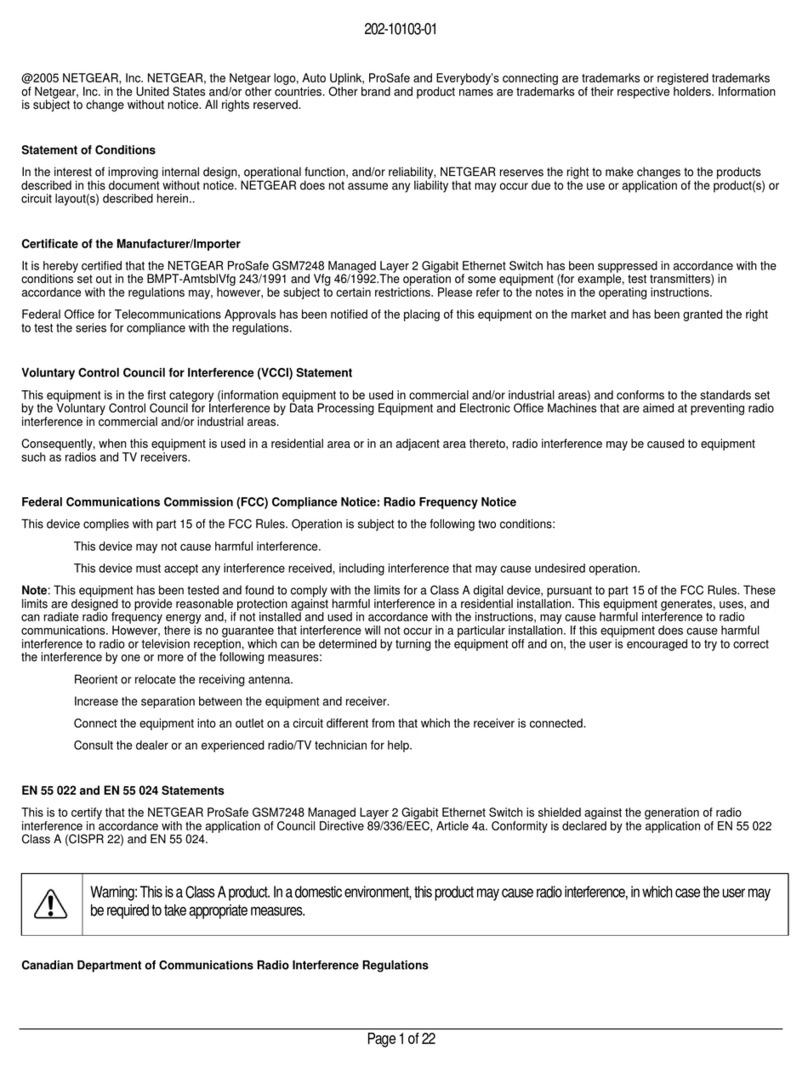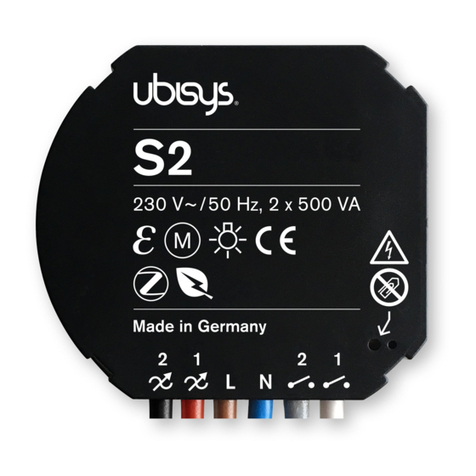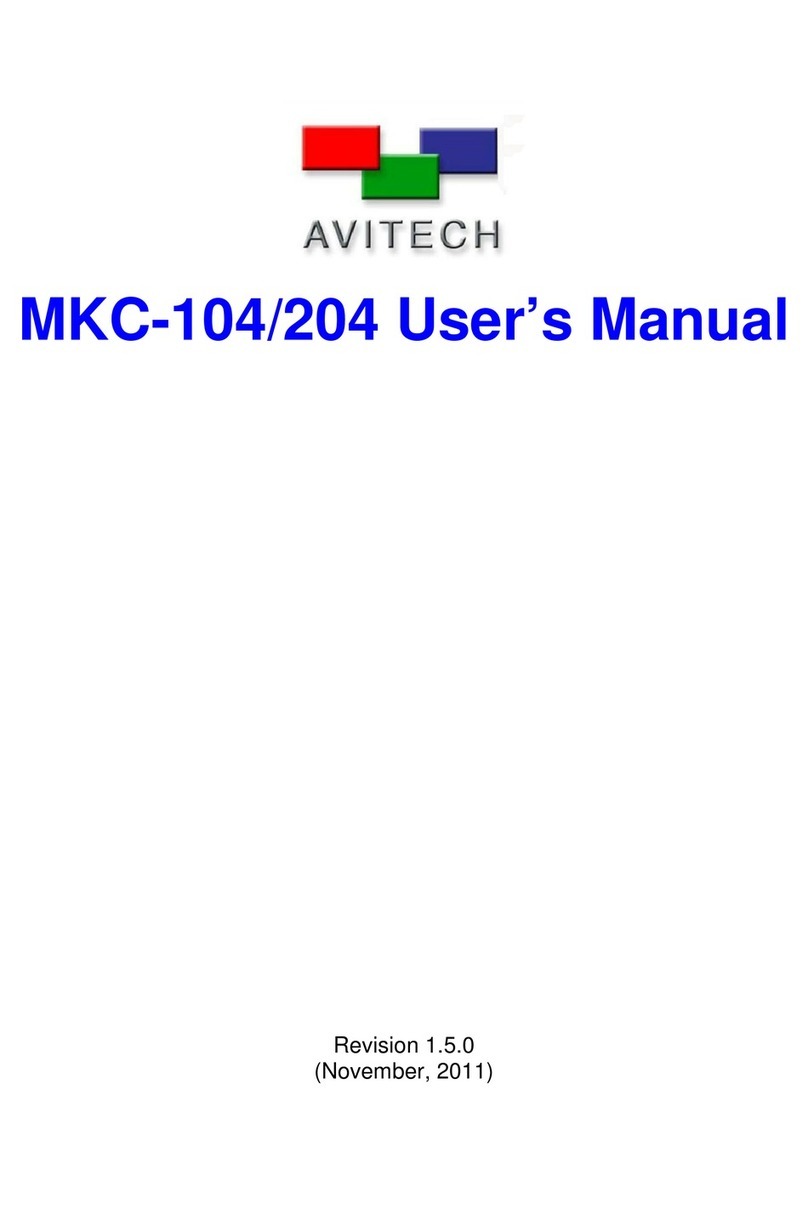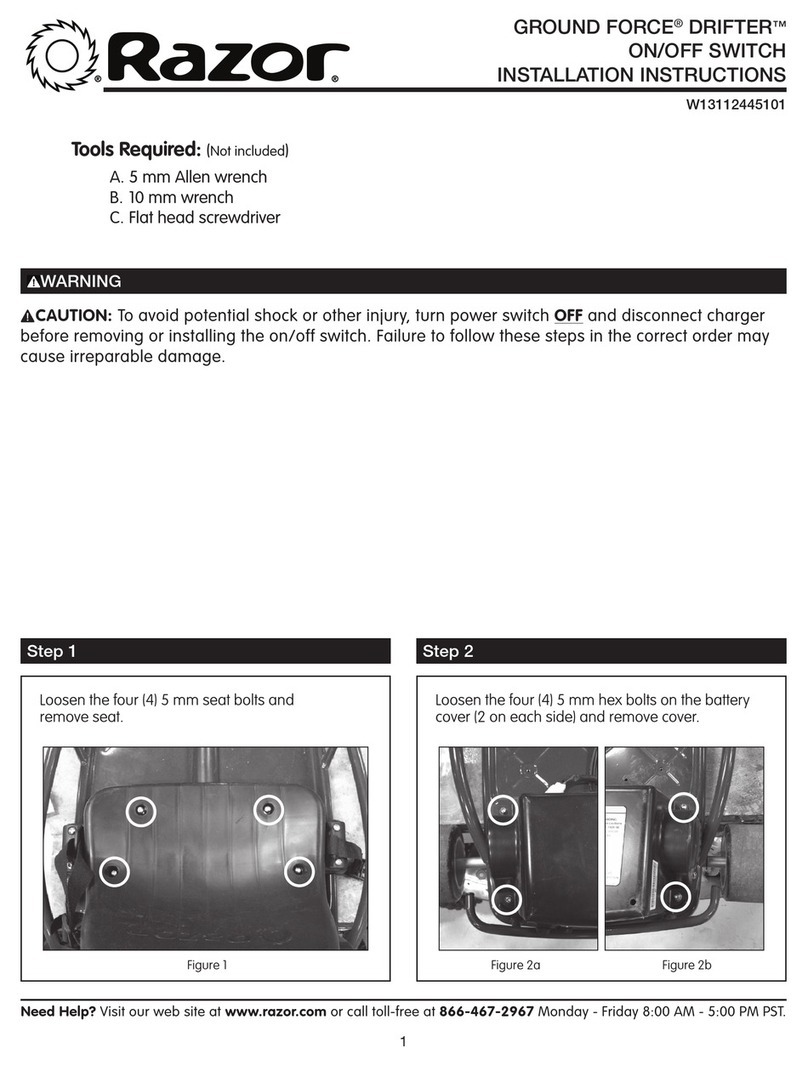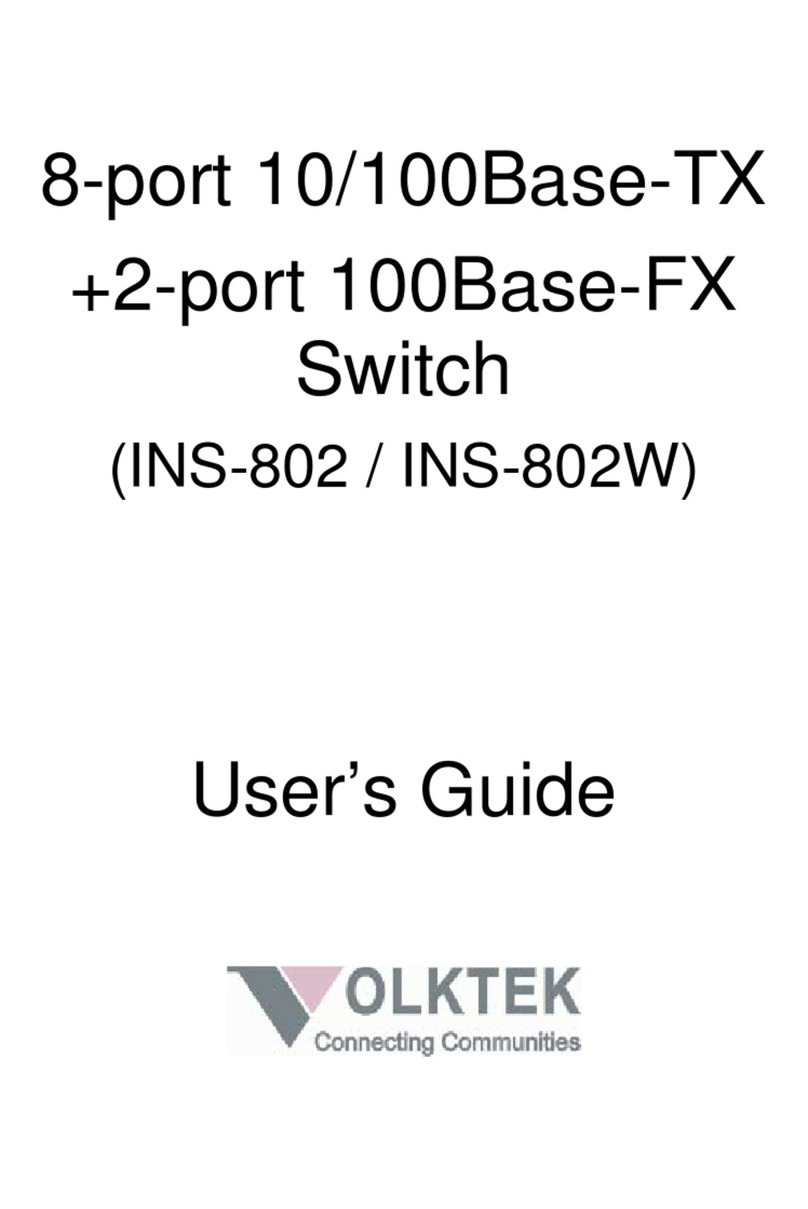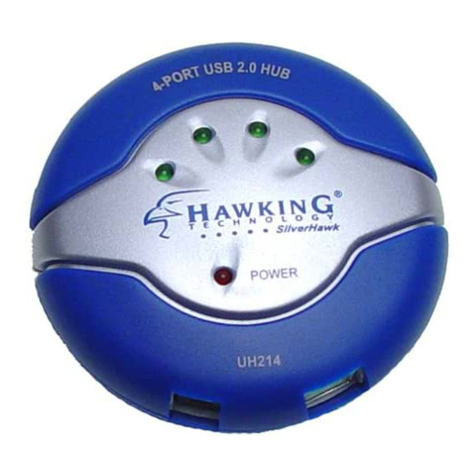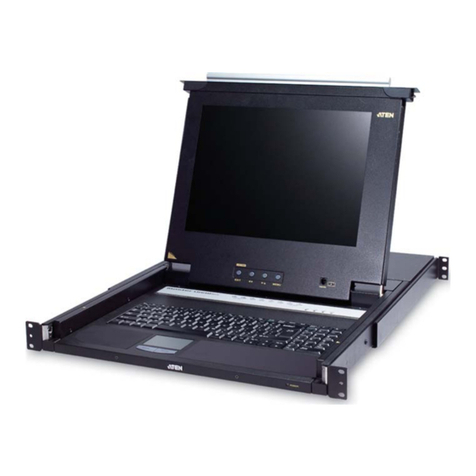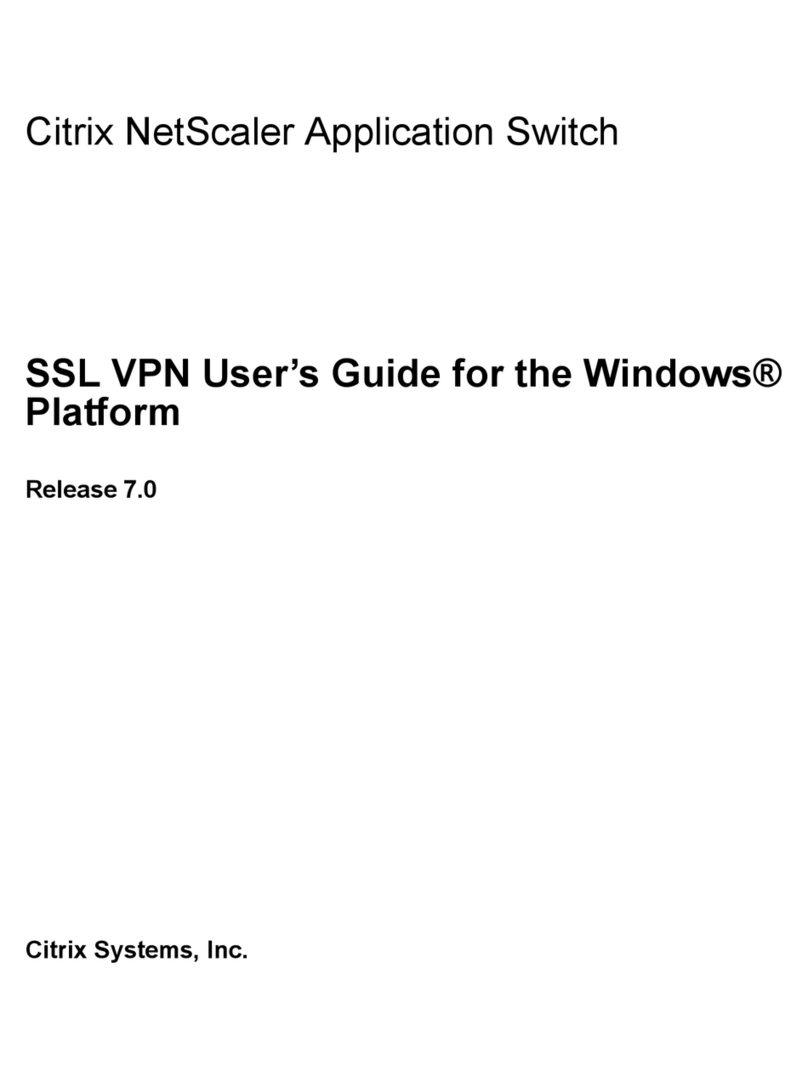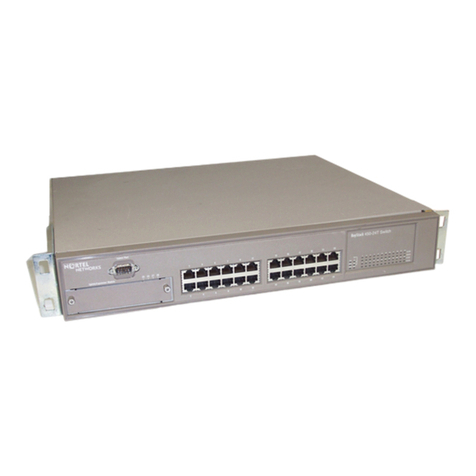Aeronix GES User manual

1775 West Hibiscus Blvd, Suite 200
Melbourne, FL 32901
(321) 984-1671
www.Aeronix.com
Gigabit Ethernet Switch (GES)
User’s Manual

GES – Users Manual
Page ii
Document Revision History
Ver/Rev
Description of Change
Chg’d By
Chg/Rel #
Date
-001/- Initial Release of User’s Manual for the
GEN2GES R. Little SP-619 10 October 2011
-001/A Added Section 12 – Performance Parameters R. Kneapler SP-640 9 December 2011
-001/B Update Section 9 to reflect updated mounting
hardware R. Kneapler SP-705 2 July 2012
-001/C
Fixed word order issue with Summary Status
packet in (Sect 7.3.2), and corrected the unit
weight on pages 29 & 31
R. Little SP-725 6 September 2012
-001/D Added COG dimensioning to GES Chassis
Drawing in Section 9. S. Ammerman SP-738 19 October 2012
-001/E Updated Qualification Test Table (see page
30) S. Ammerman SP-814 16 September 2013
Note:
This manual applies to the Aeronix
AE101264-002
12-Port Gigabit Ethernet Switch
This User’s Manual is Part Number AE301016-001

GES – Users Manual
Page iii
Table of Contents
1. OVERVIEW ..........................................................................................................1
2. BLOCK DIAGRAM ...............................................................................................1
3. ELECTRICAL CONNECTIONS............................................................................2
3.1. J1 CONNECTOR...................................................................................................2
3.2. J2 CONNECTOR...................................................................................................2
3.3. TABLE 3-1: CONNECTOR PIN-OUTS .......................................................................3
3.4. INTERFACE PORT DETAILS....................................................................................4
3.4.1. Ethernet Ports ............................................................................................4
3.4.2. Serial and Programming Ports ...................................................................4
3.4.3. Management Processor .............................................................................4
3.4.4. Input Power................................................................................................5
4. PORT DETAILS....................................................................................................6
4.1. ETHERNET PORT MAPPING...................................................................................6
4.2. SERIAL PORTS.....................................................................................................6
5. BOOTLOADER ....................................................................................................7
6. MENU INTERFACE..............................................................................................8
6.1. REQUIRED HARDWARE .........................................................................................8
6.2. SERIAL PORT SETUP............................................................................................8
6.3. MENUS ...............................................................................................................8
6.3.1. How the menus work..................................................................................8
6.3.2. Menu Header .............................................................................................8
6.3.3. Main Menu .................................................................................................9
6.3.4. Configuration Menu..................................................................................10
6.4. EXAMPLE ..........................................................................................................12
7. MANAGEMENT PROCESSOR ETHERNET COMMUNICATIONS ...................15
7.1. NETWORK COMMUNICATIONS SUPPORTED...........................................................15
7.2. GENERAL FORMAT OF A GES UDP PACKET ........................................................15
7.3. UDP PACKETS ACCEPTED/PRODUCED WHILE GES APPLICATION IS ACTIVE ..........16
7.3.1. GES Status Command (Opcode: 0) .........................................................16
7.3.2. GES Summary Status (Opcode 1) ...........................................................17
7.3.3. GES Initiated BIT Status (Opcode 2) .......................................................18
7.3.4. GES Operational Status (Opcode 4) ........................................................20
7.3.5. GES Performance Status (Opcode 5) ......................................................21
7.3.6. GES Programming Command (Opcode 3)...............................................22
7.3.7. GES Programming Response (Opcode 6) ...............................................23
7.3.8. GES Reboot .............................................................................................24
7.3.9. GES Reboot Acknowledge.......................................................................24
7.3.10. Opcode Unrecognized By Application......................................................24

GES – Users Manual
Page iv
7.4. UDP PACKETS ACCEPTED/PRODUCED WHILE BOOTLOADER IS ACTIVE .................24
7.4.1. Opcode Unrecognized By Bootloader ......................................................24
7.4.2. Erase Non-Boot-Bank (NBB) Flash..........................................................25
7.4.3. Erase NBB Flash Acknowledge ...............................................................25
7.4.4. Erase NBB Flash Completed ...................................................................25
7.4.5. Program NBB Data ..................................................................................26
7.4.6. Program NBB Data Acknowledge ............................................................26
7.4.7. Program NBB Data Completed ................................................................26
7.4.8. Finished Programming .............................................................................27
7.4.9. Finished Programming Acknowledge.......................................................27
7.4.10. Bad CRC..................................................................................................27
8. SWITCH MANAGEMENT CAPABILITIES.........................................................28
9. HARDWARE MOUNTING ..................................................................................29
10. INDICATORS .....................................................................................................29
11. QUALIFICATIONS .............................................................................................30
12. PERFORMANCE PARAMETERS......................................................................31
13. WARRANTY .......................................................................................................31
14. ERRATA.............................................................................................................31
14.1. COMMUNICATIONS WITH THE GES MANAGEMENT PROCESSOR .............................31
15. PRODUCTS AND SERVICES............................................................................33
Aeronix places no restriction on the duplication or distribution of this document;
however, it must remain unaltered and in its entirety.
Copyright 2012©by Aeronix, Inc. All rights reserved.

GES – Users Manual
Page 1 of 33
1. Overview
Designed and produced by Aeronix, Inc. of Melbourne, Florida, the Gigabit Ethernet
Switch (GES) is designed for use in hostile environments.
The GES is a lightly managed switch with twelve 10/100/1000BaseT Ethernet ports, and
two RS-232 management ports. Its rugged monolithic design is intended to operate in
severe environments without the need for forced air cooling.
This document is intended to provide the information required to interface with the
Aeronix Gigabit Ethernet Switch (GES) hardware.
The part number of the Aeronix 12-Port Gigabit Ethernet Switch is AE101264-002.
2. Block Diagram
The basic functional blocks within the GES and their basic interactions are shown in
Figure 2-1.
Figure 2-1: GES Block Diagram

GES – Users Manual
Page 2 of 33
3. Electrical Connections
The GES has two electrical connectors, J1 and J2.
3.1. J1 Connector
J1 is a 100 pin M38999 Series II connector, Part Number MS27508E22B35P.
An example mating cable connector for J1 is Part Number MS27473E22B35S.
J1 contains the following electrical interfaces:
•Six Ethernet Ports (0 – 5)
•Two RS-232 Serial Ports
oDEV1 – Dedicated Maintenance Port for the Management Processor
oDEV2 – Designed to be programmed as an Ethernet to Serial Bridge
3.2. J2 Connector
J2 is a 100 pin M38999 Series II connector Part Number MS27508E22B35PA.
An example mating cable connector for J2 is Part Number MS27473E22B35SA.
J2 contains the following electrical interfaces:
•Six Ethernet Ports (6 – 11)
•Input Power (nominal 28 VDC per MIL-STD-704A)

GES – Users Manual
Page 3 of 33
3.3. Table 3-1: Connector Pin-outs
J1 J2
Pin
Signal
Pin
Signal
Pin
Signal
Pin
Signal
1
Chassis Ground
51
Chassis Ground
1
Chassis Ground
51
Chassis Ground
2
Port 0 - A(+)
52
Chassis Ground
2
Port 6 - A(+)
52
Chassis Ground
3
Port 0 - C(-)
53
Port 3 - A(+)
3
Port 6 - C(-)
53
Port 9 - A(+)
4
Port 0 - D(+)
54
Port 3 - C(+)
4
Port 6 - D(+)
54
Port 9 - C(+)
5
Port 0 - D(-)
55
Port 3 - D(-)
5
Port 6 - D(-)
55
Port 9 - D(-)
6
Chassis Ground
56
RX_FROM_DEV1
6
Chassis Ground
56
28VRTN
7
Port 1 - A(+)
57
TX_TO_DEV1
7
Port 7 - A(+)
57
28VRTN
8
Chassis Ground
58
Chassis Ground
8
Chassis Ground
58
Chassis Ground
9
Chassis Ground
59
Port 2 - B(+)
9
Chassis Ground
59
Port 8 - B(+)
10
Port 0 - A(-)
60
Port 2 - C(-)
10
Port 6 - A(-)
60
Port 8 - C(-)
11
Port 0 - C(+)
61
Port 2 - D(+)
11
Port 6 - C(+)
61
Port 8 - D(+)
12
Chassis Ground
62
Chassis Ground
12
Chassis Ground
62
Chassis Ground
13
Port 1 - A(-)
63
Port 3 - A(-)
13
Port 7 - A(-)
63
Port 9 - A(-)
14
Port 1 - C(+)
64
Chassis Ground
14
Port 7 - C(+)
64
Chassis Ground
15
Port 1 - D(-)
65
Chassis Ground
15
Port 7 - D(-)
65
Chassis Ground
16
Reserved
66
Chassis Ground
16
28V
66
Chassis Ground
17
Chassis Ground
67
RX_FROM_DEV2
17
Chassis Ground
67
28VRTN
18
Chassis Ground
68
TX_TO_DEV2
18
Chassis Ground
68
Reserved
19
Port 0 - B(+)
69
Chassis Ground
19
Port 6 - B(+)
69
Chassis Ground
20
Chassis Ground
70
Chassis Ground
20
Chassis Ground
70
Chassis Ground
21
Port 1 - B(+)
71
Port 2 - C(+)
21
Port 7 - B(+)
71
Port 8 - C(+)
22
Port 1 - B(-)
72
Port 2 - D(-)
22
Port 7 - B(-)
72
Port 8 - D(-)
23
Port 1 - C(-)
73
Chassis Ground
23
Port 7 - C(-)
73
Chassis Ground
24
Port 1 - D(+)
74
Chassis Ground
24
Port 7 - D(+)
74
Chassis Ground
25
Reserved
75
Port 5 - D(-)
25
28V
75
Port 11 - D(-)
26
GND
76
Port 5 - D(+)
26
Reserved
76
Port 11 - D(+)
27
Reserved
77
GND
27
Chassis Ground
77
28VRTN
28
Port 0 - B(-)
78
Chassis Ground
28
Port 6 - B(-)
78
Chassis Ground
29
Chassis Ground
79
Port 4 - A(+)
29
Chassis Ground
79
Port 10 - A(+)
30
Chassis Ground
80
Chassis Ground
30
Chassis Ground
80
Chassis Ground
31
Chassis Ground
81
Chassis Ground
31
Chassis Ground
81
Chassis Ground
32
Chassis Ground
82
Chassis Ground
32
Chassis Ground
82
Chassis Ground
33
Chassis Ground
83
Port 5 - A(+)
33
Chassis Ground
83
Port 11 - A(+)
34
Chassis Ground
84
Port 5 - C(+)
34
Chassis Ground
84
Port 11 - C(+)
35
Reserved
85
Port 5 - C(-)
35
28V
85
Port 11 - C(-)
36
Reserved
86
Chassis Ground
36
28V
86
Chassis Ground
37
Chassis Ground
87
Chassis Ground
37
Chassis Ground
87
Chassis Ground
38
Chassis Ground
88
Port 4 - A(-)
38
Chassis Ground
88
Port 10 - A(-)
39
Chassis Ground
89
Port 4 - D(-)
39
Chassis Ground
89
Port 10 - D(-)
40
Port 2 - A(+)
90
Port 4 - D(+)
40
Port 8 - A(+)
90
Port 10 - D(+)
41
Chassis Ground
91
Chassis Ground
41
Chassis Ground
91
Chassis Ground
42
Port 3 - B(+)
92
Port 5 - A(-)
42
Port 9 - B(+)
92
Port 11 - A(-)
43
Port 3 - B(-)
93
Port 5 - B(+)
43
Port 9 - B(-)
93
Port 11 - B(+)
44
Port 3 - C(-)
94
Chassis Ground
44
Port 9 - C(-)
94
Chassis Ground
45
Port 3 - D(+)
95
Port 4 - B(+)
45
Port 9 - D(+)
95
Port 10 - B(+)
46
Reserved
96
Port 4 - B(-)
46
Reserved
96
Port 10 - B(-)
47
GND
97
Port 4 - C(+)
47
Reserved
97
Port 10 - C(+)
48
Chassis Ground
98
Port 4 - C(-)
48
Chassis Ground
98
Port 10 - C(-)
49
Port 2 - B(-)
99
Chassis Ground
49
Port 8 - B(-)
99
Chassis Ground
50 Port 2 - A(-) 100 Port 5 - B(-) 50 Port 8 - A(-) 100 Port 11 - B(-)

GES – Users Manual
Page 4 of 33
3.4. Interface Port Details
3.4.1. Ethernet Ports
All connections in Table 3-1 that have a white background are Ethernet Port
connections.
Table 3-2 indicates the appropriate wiring connections for the GES Ethernet ports
relative to the available link speeds. Please note that MDI is the preferred connection
choice. The GES and most modern Ethernet enabled electronics are capable of
connecting using the MDIX scheme, but it is not advised.
Table 3-2: Ethernet Port Connections
GES Pin RJ-45
Pinout P/N
MDI
MDIX
1000Base-T
100Base-T
10-Base-T
1000Base-T
100Base-T
10-Base-T
Port X - A(+/-)
1/2
BI_DA+-
TX+-
TX+-
BI_DA+-
RX+-
RX+-
Port X - B(+/-)
3/6
BI_DB+-
RX+-
RX+-
BI_DB+-
TX+-
TX+-
Port X - C(+/-)
4/5
BI_DC+-
Unused
Unused
BI_DC+-
Unused
Unused
Port X - D(+/-)
7/8
BI_DD+-
Unused
Unused
BI_DD+-
Unused
Unused
3.4.2. Serial and Programming Ports
All connections in Table 3-1 that have an Orange background are Serial Port
connections.
The DEV1 serial port is a dedicated GES Management Processor Maintenance Port.
The DEV2 serial port was designed for future expansion as an in-band Ethernet to Serial
Bridge.
Table 3-3 indicates the appropriate wiring connections for the DEV1 and DEV2 serial
ports.
Table 3-3: Serial Port Connections
Signal
Direction
Type
Connects
Notes
TX_TO_DEVX
Output
RS-232
DB9-2
RX_FROM_DEVX
Input
RS-232
DB9-3
GND
Reference
RTN
DB9-5
J1-26,77
3.4.3. Management Processor
The GES provides an ARM 9 processor running at 96MHz for both internal and customer
specified functions. This processor is in-band allowing control by any device on the
Ethernet network that is connected to the GES.
This processor is lightly loaded after initialization of the GES allowing customer specified
functions to use most of the available processing power if required.

GES – Users Manual
Page 5 of 33
The primary purpose of this processor is to:
•Initialize the Ethernet Switch IC for GES default operation
•PBIT and CBIT
•Customer specific functions if required
3.4.4. Input Power
The connections shown in Table 3-1 with a Red background are Power Connections.
The input power requirements are as specified in MIL-STD-704A:
Aircraft, 28 VDC, Category B (curves 2 &3 of Fig. 9)
During normal operations the average power consumption with all 12 ports connected at
1 GB speed is 17 watts. Input current is internally limited to 2 amps.

GES – Users Manual
Page 6 of 33
4. Port Details
4.1. Ethernet Port Mapping
In its factory default configuration, all twelve Ethernet ports of the GES are configured
identically. When programming custom configurations into the GES, the External-Port
numbers map to the Switch’s MAC and Phy Port numbers as defined in Table 4-1.
Table 4-1 Ethernet Port Mapping
External Port
MAC Port
Phy Port
Port 0
10
4
Port 1
11
5
Port 2
9
6
Port 3
8
7
Port 4
7
8
Port 5
6
9
Port 6
4
10
Port 7
2
11
Port 8
3
12
Port 9
5
13
Port 10
1
14
Port 11
0
15
GES Internal
Management CPU CPU Port n/a
4.2. Serial Ports
There are two serial ports associated with the Management Processor, DEV1 and DEV2.
Both ports are RS-232 compatible and operate only at:
•115.2K baud
•1 Stop Bit
•No Parity
•No Flow Control
The DEV1 port supports out-of-band configuration management of the GES.
The DEV2 serial port is available for customer specific uses. Contact Aeronix if you
would like custom programming for this port such as an Ethernet to Serial bridge or
sensor/actuator to Ethernet.See section 6.2 for current details.

GES – Users Manual
Page 7 of 33
5. Bootloader
The GES management processor (STR912) executes code directly from flash. The GES
supports running from either of two internal banks of flash. The smaller bank is
dedicated to the bootloader. This allows upgrading of the GES application software in
the field over the network. Immediately after power up the bootloader allows nine
seconds to begin a code load before it jumps to the application that executes out of the
main (larger) bank of flash.

GES – Users Manual
Page 8 of 33
6. Menu Interface
The GES Menu Interface is used for out-of-band control of the GES. It provides the
ability to customize configurations and status monitoring.
6.1. Required Hardware
To interact with the STR9 CPU, the following hardware is required:
•Power supply
•Gigabit Ethernet Switch, Part Number AE101264
•Computer with Terminal Emulation software (i.e.: TeraTerm under Windows)
6.2. Serial Port Setup
Serial port setup is 115,200 Baud with N81 and no hardware or software handshaking.
The command system is tied to DEV1.
The second UART (DEV2) will reply to an input character with a message string “Saw a
NN on port 1\n”, where NN is a hexadecimal representation of the input character.
6.3. Menus
6.3.1. How the menus work
All menu selections require a single character to be input. There is no need to enter a
carriage return.
6.3.2. Menu Header
GES Software Version: 4.3
GES Bootloader Version: 7
Hardware Serial Number: 1002
MAC Address: 00:0B:D1:08:10:02
FDB Table Index: 984
IP Address[0]: 192.168.1.100
IP Mask[0] : 255.255.255.0
IP Address[1]: 172.31.129.100
IP Mask[1] : 255.255.255.0
Temperature: 35 C
The menu header is displayed above every menu. The serial number, MAC address and
FDB table index are unique to each GES (these values are programmed at the factory
and are not modifiable by the customer). The IP addresses and netmasks are
configurable by the customer via the RS-232 interface.

GES – Users Manual
Page 9 of 33
6.3.3. Main Menu
Main menu
d display statistics
u display UIP statistics
1 MAC port status
2 PHY port status
o dump MIB counts
c go to configuration menu
6.3.3.1. ‘d’ – display statistics
Display the counts of interrupts serviced by the management processor.
6.3.3.2. ‘u’ – display UIP statistics
Display the packet counts of various types that were sent and received by the
management processor.
6.3.3.3. ‘1’ – MAC port status
Show the port status of the MAC ports. Shows link connection status, speed, duplex and
other information. Note: Port 63 corresponds to the management CPU port.
6.3.3.4. ‘2’ – PHY port status
Show the port status of the phy ports. Shows link up/down, speed, duplex, and other
information gleaned from the phy chips connected to each external port.
6.3.3.5. ‘o’ – dump MIB counts
Show the various packet and octet counts for data going into and out of every port.In
addition counts going to and from the CPU port are shown.
6.3.3.6. ‘c’ – go to configuration menu
Change to the Configuration Menu (you can get back to the main menu by hitting ‘b’).

GES – Users Manual
Page 10 of 33
6.3.4. Configuration Menu
6.3.4.1. Menu Overview
Configuration menu
c show configuration
p set primary IP address and netmask
s set secondary IP address and netmask
d set mirror destination
m set port mirror details
u set cpu mirror details
f write out current config to flash
b back to main menu
6.3.4.2. ‘c’ – show configuration
Display the contents of the configuration structure (Displayed below is the default
configuration). This configuration is stored in flash memory and may be modified using
the serial port and saved. This configuration survives power cycling of the GES unit.
IP_address[0]: 6401A8C0 (192.168.1.100)
IP_address[1]: 64811FAC (172.31.129.100)
IP_mask[0]: 00FFFFFF (255.255.255.0)
IP_mask[1]: 00FFFFFF (255.255.255.0)
mirror_destination: 2
switch_mirror[0..11]: N B N N N N N N N N N N
cpu_switch_mirror: N
crc32: 3875E0CC
The management CPU supports two IP addresses. This allows the GES management
CPU to potentially participate in two distinct subnets. The primary IP and net mask are
shown as IP_address[0] and IP_mask[0]. The secondary IP and net mask are shown
as IP_address[1] and IP_mask[1].
The GES supports port mirroring. This allows monitoring of traffic going in or out of any
of the ports. The mirror_destination is the external port number where the mirrored
traffic is directed. The switch_mirror[0..11] describes the mirroring state of each
external port of the GES. An ‘N’ indicates no mirroring, an ‘I’ indicates ingress mirroring,
an ‘E’ indicates egress mirroring, while a ‘B’ indicates both ingress and egress mirroring.
The cpu_switch_mirror is much like the switch_mirror[0..11], but it indicates the
mirroring for data going to and from the CPU port.
NOTE: Port mirroring is enabled using a GES Status Command UDP packet with the
GES Traffic Capture Mode bit set. Once enabled, the mirroring can only be reset with a
power cycle of the GES.

GES – Users Manual
Page 11 of 33
The crc32 is generated internally and is used to verify the stored values in flash. If the
crc32 fails the GES reverts to the default values.
6.3.4.3. ‘p’ – set primary IP address and netmask
The GES will prompt for the new IP address (saved as IP_address[0]). It expects it in
dotted notation followed by a carriage return. Any characters other than 0-9, a period or
a carriage return cause the update to be aborted. After the IP address is entered, the
GES prompts for the netmask (saved as IP_mask[0]). The netmask must also be
entered in dotted notation. At the conclusion of a successful IP address and netmask
input the GES writes the configuration to flash.
6.3.4.4. ‘s’ – set secondary IP address and netmask
The GES will prompt for the new IP address (saved as IP_address[1]). It expects it in
dotted notation followed by a carriage return. Any characters other than 0-9, a period or
a carriage return cause the update to be aborted. After the IP address is entered, the
GES prompts for the netmask (saved as IP_mask[1]). The netmask must also be
entered in dotted notation. At the conclusion of a successful IP address and netmask
input the GES writes the configuration to flash.
6.3.4.5. ‘d’ – set mirror destination
The GES prompts for an entry (0-9,a,b), where external ports 10 and 11 are represented
by ‘a’ and ‘b’ respectively. At the conclusion of a successful mirror destination input the
GES writes the configuration to flash.
6.3.4.6. ‘m’ – set mirror details
The GES prompts for each port in sequence, expecting ‘I’ (for ingress),’E’ (for egress),’N’
(neither ingress nor egress),’B’ (both ingress and egress). This updates the
switch_mirror[0..11] field. At the conclusion of a successful mirror details input the
GES writes the configuration to flash.
6.3.4.7. ‘u’ – set cpu mirror details
The GES prompts for the management CPU mirroring configuration, expecting ‘I’ (for
ingress),’E’ (for egress),’N’ (neither ingress nor egress),’B’ (both ingress and egress). At
the conclusion of a successful CPU mirror details input the GES writes the configuration
to flash.
6.3.4.8. ‘f’ – write out current config to flash
Commands the GES to write out the current configuration to flash. This is useful if you
want to burn the default configuration to flash. Normally any update of any of the
configuration fields causes the configuration to be saved to flash.
6.3.4.9. ‘b’ – back to main menu
Return to the main menu.

GES – Users Manual
Page 12 of 33
6.4. Example
This is an example of the interaction with the GES command line interface.
The following actions are performed:
•Change to the configuration menu
•Show the current extra configuration
•Update the Primary IP
•Show the new configuration
Note: characters input by the user are in bold.
Main Menu
Cmd Description
d display statistics
u display UIP statistics
1 MAC port status
2 PHY port status
o dump MIB counts
c go to configuration menu
GES>c
GES Software Version: 4.3
GES Bootloader Version: 7
Hardware Serial Number: 1002
MAC Address: 00:0B:D1:08:10:02
FDB Table Index: 984
IP Address[0]: 192.168.1.100
IP Mask [0]: 255.255.255.0
IP Address[1]: 172.31.129.100
IP Mask [1]: 255.255.255.0
temperature: 43 C
Configuration Menu
Cmd Description
c show configuration
p set primary IP address and netmask
s set secondary IP address and netmask
d set mirror destination
m set port mirror details
u set cpu mirror details
f write out current config to flash
b back to main menu
GES>c
IP_address[0]: 6401A8C0 (192.168.1.100)
IP_address[1]: 64811FAC (172.31.129.100)

GES – Users Manual
Page 13 of 33
IP_mask[0]: 00FFFFFF (255.255.255.0)
IP_mask[1]: 00FFFFFF (255.255.255.0)
mirror_destination: 2
switch_mirror[0..11]: N B N N N N N N N N N N
cpu_switch_mirror: N
crc32: 3875E0CC
GES>p
Enter in primary IP address in dotted notation
192.168.1.101
you entered 192.168.1.101
Enter in primary IP mask in dotted notation
255.255.255.0
IP_address[0]: 6401A8C0 (192.168.1.100)
IP_address[1]: 64811FAC (172.31.129.100)
IP_mask[0]: 00FFFFFF (255.255.255.0)
IP_mask[1]: 00FFFFFF (255.255.255.0)
mirror_destination: 2
switch_mirror[0..11]: N B N N N N N N N N N N
cpu_switch_mirror: N
crc32: 3875E0CC
IP_address[0]: 6501A8C0 (192.168.1.101)
IP_address[1]: 64811FAC (172.31.129.100)
IP_mask[0]: 00FFFFFF (255.255.255.0)
IP_mask[1]: 00FFFFFF (255.255.255.0)
mirror_destination: 2
switch_mirror[0..11]: N B N N N N N N N N N N
cpu_switch_mirror: N
crc32: 3692081D
Disabling Write Protection on configuration sector
Erasing configuration sector
done erasing
Writing configuration structure
IP_address[0]: 6501A8C0 (192.168.1.101)
IP_address[1]: 64811FAC (172.31.129.100)
IP_mask[0]: 00FFFFFF (255.255.255.0)
IP_mask[1]: 00FFFFFF (255.255.255.0)
mirror_destination: 2
switch_mirror[0..11]: N B N N N N N N N N N N
cpu_switch_mirror: N
crc32: 3692081D
GES> c
IP_address[0]: 6401A8C0 (192.168.1.101)

GES – Users Manual
Page 14 of 33
IP_address[1]: 64811FAC (172.31.129.100)
IP_mask[0]: 00FFFFFF (255.255.255.0)
IP_mask[1]: 00FFFFFF (255.255.255.0)
mirror_destination: 2
switch_mirror[0..11]: N B N N N N N N N N N N
cpu_switch_mirror: N
crc32: 3692081D

GES – Users Manual
Page 15 of 33
7. Management Processor Ethernet Communications
7.1. Network Communications Supported
The GES management processor supports ARP, ICMP (ping), and UDP communications. UDP
traffic is supported on port 3500. All fields are sent in network byte order. This means that fields
larger than a byte will be read and written using standard access routines. These routines are
host-to-network-short “htons()”, host-to-network-long “htonl()”, network-to-host-short “ntohs()”
and network-to-host-long “ntohl()”.
7.2. General Format of a GES UDP Packet
1
1
1
1
1
1
5
4
3
2
1
0
9
8
7
6
5
4
3
2
1
0
Length (in words)
Opcode
Additional words (if required)
Length – Length of the GES UDP Packet in words.
Opcode – Operation performed by this packet.

GES – Users Manual
Page 16 of 33
7.3. UDP Packets Accepted/Produced While GES Application is
Active
7.3.1. GES Status Command (Opcode: 0)
1
1
1
1
1
1
5
4
3
2
1
0
9
8
7
6
5
4
3
2
1
0
Length (3)
0
Opcode (0)
1
Spare (0)
2
GES
Summary
Status
1Hz
Update
Request
GES
Initiated
BIT Request
GES Traffic
Capture Mode
GES Operational
Status Mode
GES Operational
Performance Mode
Direction: To GES.
Word 2, Bit 0 – GES Summary Status 1Hz Update Request (0 – OFF, 1 – Request 1Hz updates)
Word 2, Bit 1 – GES Initiated BIT Status Request (0 – OFF, 1 – Request IBIT status)
Word 2, Bit 2 – GES Traffic Capture Mode (0 – nothing, 1 – Begin Traffic Capture Mode)
Word 2, Bit 3 – GES Operational Status Mode (0 – OFF, 1 – Operational Status Mode Active)
Word 2, Bit 4 – GES Operational Performance Mode (0 – OFF, 1 – Operational Performance
Mode Active)
When the GES receives a GES Status Command it will respond with a GES Summary Status
packet.
The GES also supports up to two requests for 1Hz GES Summary Status updates. The first two
requestors will receive GES Summary Status messages at approximately 1Hz intervals. If a
request for 1Hz updates comes from the same IP address, but from a different port it will replace
the previous 1Hz update request.
Table of contents
Popular Switch manuals by other brands
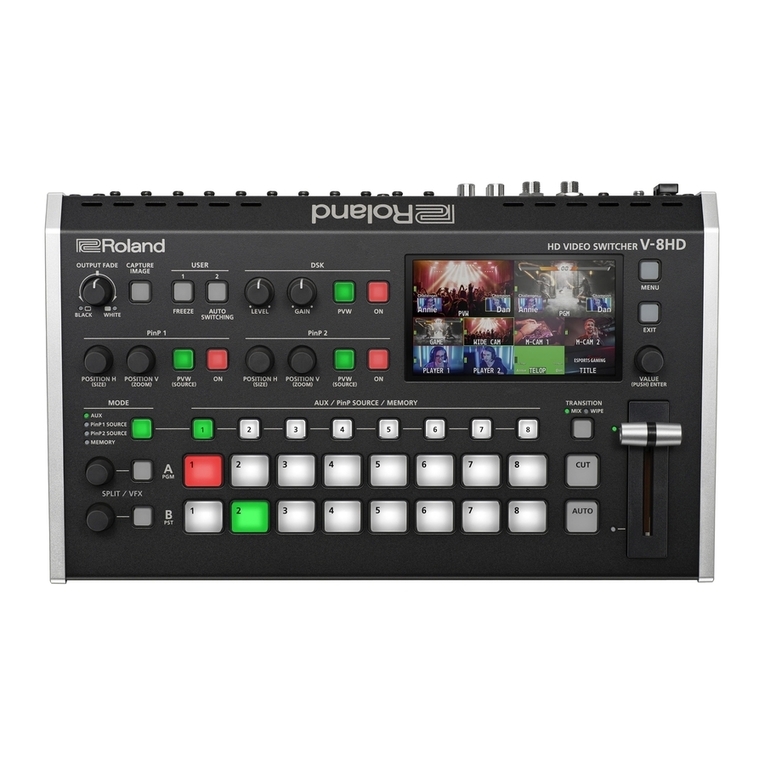
Roland
Roland V-8HD Startup guide
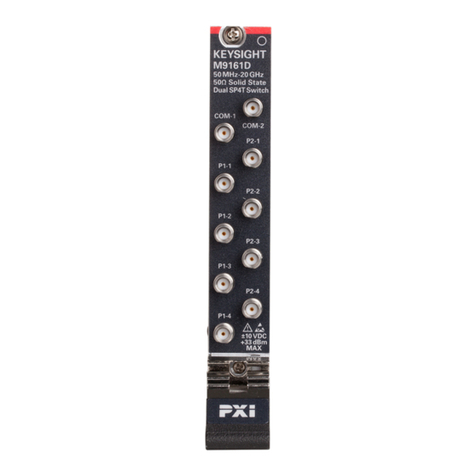
Keysight Technologies
Keysight Technologies M9155C PXI Startup and Service Guide
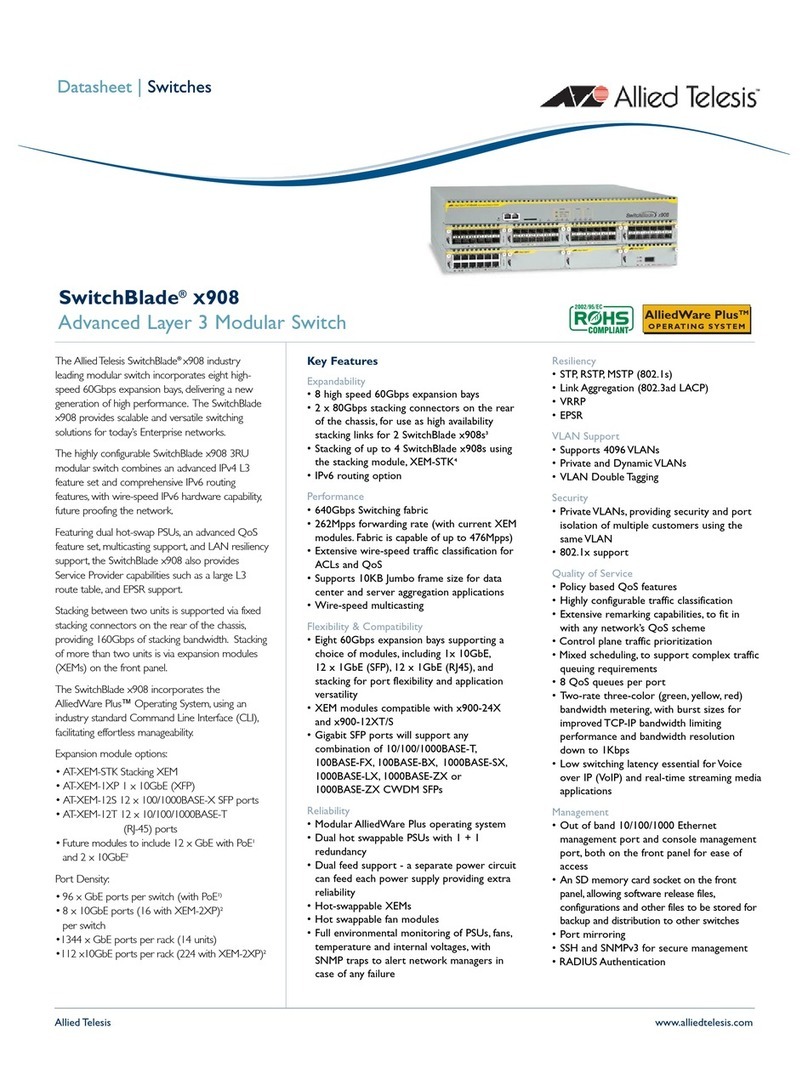
Allied Telesis
Allied Telesis Switchblade AT-x908 datasheet

QSFPTEK
QSFPTEK S5300-48T4X quick start guide
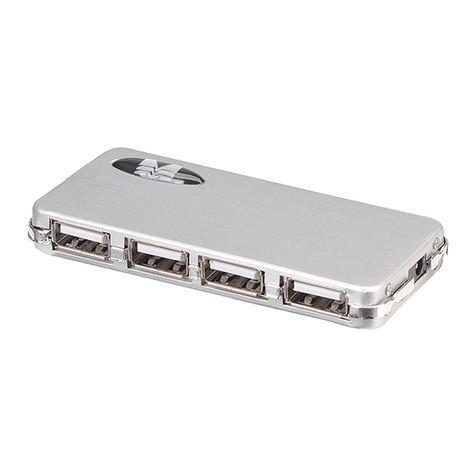
Manhattan
Manhattan 160612 user manual
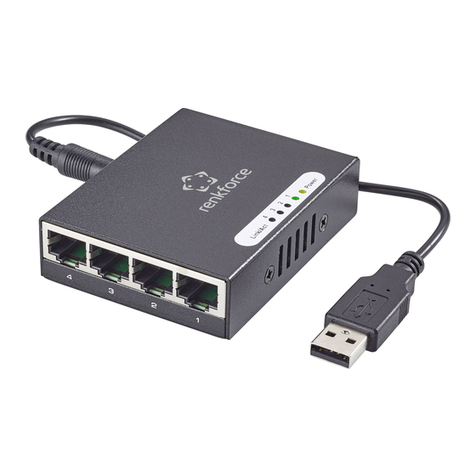
Renkforce
Renkforce RF-4270245 operating instructions

